What Do We Mean By YA?
In any hierarchy each oppressed group is always looking for someone else to look down upon. Science fiction and fantasy occupy a pretty lowly place on the greasy totem pole of literary respectability. It is therefore perhaps not surprising that, when last year’s Hugo Award for Best Novel shortlisted three books marketed as “Young Adult”, a few eyebrows were raised around the blogosphere. After all, “serious” literary critics often take the view that SF&F is actually for children, something that you should grow out of reading when you become an adult. Many people will be keen to prove that idea wrong.
Yet SF&F have a long and honorable tradition in providing fiction for teenagers. The “Heinlein juvenile” is often held up as an example of some of the best the genre has to offer. Hugo Gernsback firmly believed in providing science education for young people. And many writers today are enthusiastically jumping into the YA arena. There is clearly a connection here.
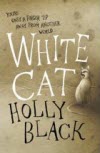 What, you might ask, has prompted this fit of introspection? Well, I recently had the pleasure of reading Holly Black’s latest novel, White Cat [Purchase]. It is a fine book, but I couldn’t help noticing the sticker on the cover proudly proclaiming “A novel for grown-ups from the author of Spiderwick”. Now, the central characters of White Cat are teenagers. Much of the action takes place in a school. The book opens with the lead character up on the school roof, which sounds like an affectionate nod to Philip Pullman’s The Golden Compass [Purchase]. If this isn’t a YA book, I thought to myself while reading it, I don’t know what is. And yet, here was Gollancz eager to claim that it wasn’t. Perhaps the concept of YA is more complicated than I had thought.
What, you might ask, has prompted this fit of introspection? Well, I recently had the pleasure of reading Holly Black’s latest novel, White Cat [Purchase]. It is a fine book, but I couldn’t help noticing the sticker on the cover proudly proclaiming “A novel for grown-ups from the author of Spiderwick”. Now, the central characters of White Cat are teenagers. Much of the action takes place in a school. The book opens with the lead character up on the school roof, which sounds like an affectionate nod to Philip Pullman’s The Golden Compass [Purchase]. If this isn’t a YA book, I thought to myself while reading it, I don’t know what is. And yet, here was Gollancz eager to claim that it wasn’t. Perhaps the concept of YA is more complicated than I had thought.
It is possible, of course, that YA is simply that which we call YA when we point to it. As I understand it, however, Damon Knight’s famous dictum was not an attempt to establish himself, and his fateful finger, as the ultimate arbiter of SFness, but rather it was an early exercise in what we now call crowdsourcing. Knight was saying that if enough people thought a book was science fiction then it probably was. The same can be applied to YA, but that still leaves us asking what leads someone to classify a book as YA in the first place.
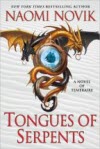 Those who wish to distance SF from YA tend to assume that writing for kids is somehow simplistic, less complex and less challenging than writing for adults. There are ways in which that is probably true. It is unlikely, for example, that anyone would publish a typical Gene Wolfe novel as YA. You don’t normally ask teenager readers to work that hard. But the corollary doesn’t hold. By no means every book published for adults is as complex and demanding as a Gene Wolfe novel. One of my guilty pleasures is Naomi Novik’s Temeraire books. I recently read the latest one, Tongues of Serpents [Purchase], and very much enjoyed it despite the lack of complexity (I raced through it in a day). I am sure that Novik’s books are read and enjoyed by many teenagers. And yet they are not published as YA.
Those who wish to distance SF from YA tend to assume that writing for kids is somehow simplistic, less complex and less challenging than writing for adults. There are ways in which that is probably true. It is unlikely, for example, that anyone would publish a typical Gene Wolfe novel as YA. You don’t normally ask teenager readers to work that hard. But the corollary doesn’t hold. By no means every book published for adults is as complex and demanding as a Gene Wolfe novel. One of my guilty pleasures is Naomi Novik’s Temeraire books. I recently read the latest one, Tongues of Serpents [Purchase], and very much enjoyed it despite the lack of complexity (I raced through it in a day). I am sure that Novik’s books are read and enjoyed by many teenagers. And yet they are not published as YA.
Another possible indicator of YA-ness is the absence of certain themes. Parents are forever getting themselves in a tizzy over what their kids are reading. Sex, drugs, violence: these are all things that kids apparently need protecting from. So do publishers avoid these themes in choosing which books to market as YA? Not a bit of it. Remember all of the moral panic we had over Margo Lanagan’s Tender Morsels [Purchase], which features child abuse and gang rape? There can’t be many topics more potentially nightmare-inducing for teenagers than that, and yet it was happily published as YA.
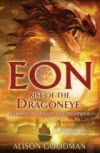 At Worldcon this year I had the pleasure of sharing a panel with Alison Goodman, author of Eon [Purchase], and Hazel Edwards, co-author (with Ryan Kennedy) of f2m: the boy within [Purchase]. Both of these books contain positive portrayals of trans characters. Hazel’s book (which is not SF) actually features a central character who is a young person going through transition from female to male. It is rare to see adult books tackling such themes. If trans characters appear in books for adults it is almost certainly for sensational impact, or as the butt of cruel jokes. YA novels, I have found, are rather more likely to treat social issues like this seriously and sensitively.
At Worldcon this year I had the pleasure of sharing a panel with Alison Goodman, author of Eon [Purchase], and Hazel Edwards, co-author (with Ryan Kennedy) of f2m: the boy within [Purchase]. Both of these books contain positive portrayals of trans characters. Hazel’s book (which is not SF) actually features a central character who is a young person going through transition from female to male. It is rare to see adult books tackling such themes. If trans characters appear in books for adults it is almost certainly for sensational impact, or as the butt of cruel jokes. YA novels, I have found, are rather more likely to treat social issues like this seriously and sensitively.
Another potential definition of YA, and one that worked for me when I read White Cat, is that YA books have central characters who are teenagers. This seems to make sense on a fairly basic level. People like to read books containing characters with whom they identify. If you are a teenager, it makes sense that you would want to read books about teenagers. This would also explain why Novik’s books are not sold as YA.
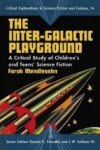 Even here, however, there are complications. For her Hugo-nominated book, The Inter-Galactic Playground [Purchase], Farah Mendlesohn read every YA science fiction book that she could lay her hands on. One of the trends that she noticed in doing so is that YA science fiction has become less and less a matter of science fiction books aimed at teenagers, and more a matter of books aimed at teenagers that happen to have a science fiction setting.
Even here, however, there are complications. For her Hugo-nominated book, The Inter-Galactic Playground [Purchase], Farah Mendlesohn read every YA science fiction book that she could lay her hands on. One of the trends that she noticed in doing so is that YA science fiction has become less and less a matter of science fiction books aimed at teenagers, and more a matter of books aimed at teenagers that happen to have a science fiction setting.
The key issue here is that many YA novels don’t just feature teenage characters, they address issues that are of concern to teenagers: school, parents, first love, and so on. In much the same way as a romance novel can be dressed up in a huge variety of different settings, so a YA novel can be set in different countries, different time periods, and in outer space.
I should note here that Mendlesohn was not advancing “being about teenage concerns” as a definition of YA, she was simply remarking on a trend that she had observed. She felt it was unfortunate that a subgenre which, in the past, had done so much to inspire young people with a love of science, was now reduced to being wallpaper for tales of teenage angst.
Publishing, however, abhors a vacuum. It may go for a very long time sticking to a maxim of “X won’t sell”. For years, maybe decades, it will be impossible to sell a book that is seen to fit the description of X. And then one day an adventurous young editor spots an amazing book that she’d buy in a second if it wasn’t very obviously the very epitome of X. She takes it to her boss, who decides to indulge her whim, and suddenly, because this is such a great book, X is the new in thing and every editor is phoning agents asking them if they have any X-like novels on their lists.
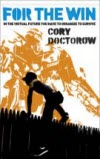 Well, that’s the fairytale version anyway. I don’t think that we are quite on the cusp of a YA science fiction resurgence yet. But we are seeing a number of books that give me cause for hope. Cory Doctorow, for example, is starting to make a career out of publishing political science fiction for teenagers. His Hugo-nominated Little Brother [Purchase] was an extended rant against the evils of security theater. It encouraged young people to stand up against the creeping imposition of a “your papers, please” culture on Western society. His new book, For The Win [Purchase], is ostensibly about video games. But Doctorow says in the introduction that one of his objectives in writing the book was to teach young people about economics, so that they might know when they were being exploited. The novel is based around young people who work as “gold farmers” making money for others though their skill in video games. This is by no means a common teenage concern.
Well, that’s the fairytale version anyway. I don’t think that we are quite on the cusp of a YA science fiction resurgence yet. But we are seeing a number of books that give me cause for hope. Cory Doctorow, for example, is starting to make a career out of publishing political science fiction for teenagers. His Hugo-nominated Little Brother [Purchase] was an extended rant against the evils of security theater. It encouraged young people to stand up against the creeping imposition of a “your papers, please” culture on Western society. His new book, For The Win [Purchase], is ostensibly about video games. But Doctorow says in the introduction that one of his objectives in writing the book was to teach young people about economics, so that they might know when they were being exploited. The novel is based around young people who work as “gold farmers” making money for others though their skill in video games. This is by no means a common teenage concern.
With The Windup Girl [Purchase] having swept almost all before it in this year’s awards, everyone will be looking for the next new book from Paolo Bacigalupi. It is already out, it is called Ship Breaker [Purchase], and if you haven’t heard of it that’s because it was published as YA. Once again this is a book that is by no means only about young love and awful parents. The book is set in a near-future America where young kids on the Gulf Coast are set to work on the difficult and dangerous job of salvaging valuable materials from the hulks of old ships. Like so much of Bacigalupi’s output, this is a book with environmental concerns very much to the fore. Like Doctorow’s work, it is very political.
A hot tip for next year’s Hugo is The Dervish House [Purchase] by Ian McDonald. His three near-future novels set in developing nations (the other two are River of Gods [Purchase] and Brasyl [Purchase]) have proved very popular, but industry gossip suggests that McDonald is moving on to something different. His next novel will apparently be a YA book. And indeed one of the most memorable characters in The Dervish House is a young boy.
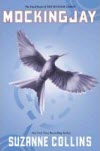 The increased interest in YA science fiction isn’t only coming from established SF authors deciding to write for teenagers. Dystopian fiction is apparently all the rage in YA at the moment. I’m currently reading one of the hottest properties around, the Hunger Games trilogy by Suzanne Collins (The Hunger Games [Purchase], Catching Fire [Purchase] & Mockingjay [Purchase]), and it is very good. It is a fast-paced adventure story with some deft plotting and interesting characters, but it is also much more than that.
The increased interest in YA science fiction isn’t only coming from established SF authors deciding to write for teenagers. Dystopian fiction is apparently all the rage in YA at the moment. I’m currently reading one of the hottest properties around, the Hunger Games trilogy by Suzanne Collins (The Hunger Games [Purchase], Catching Fire [Purchase] & Mockingjay [Purchase]), and it is very good. It is a fast-paced adventure story with some deft plotting and interesting characters, but it is also much more than that.
To start with there are classical references of the sort you might expect to see in a literary novel. In Collins’ near-future America a rich elite, based in what is probably Denver, has subdued the rest of the country and lives in luxury while the rest of the country labors to support them, and starves. The people of the “Capitol” fairly obviously owe a lot to ancient Rome, even down to vomiting up food so that they can eat more at parties. The central conceit, the idea that each subject territory must send a young boy and girl every year to participate in gladiatorial games, is straight out of the legend of Theseus and the Minotaur.
From there, however, Collins’ political astuteness takes over. Rather than have the young tributes be eaten by a monster, she has them pitted against each other in a televised fight for survival in a dangerous wilderness environment. The winner will not just be a survivor, she will be a ruthless killer. I am sure that there will be academic papers written about Collins’ use of reality TV as a tool of political oppression. There may also be papers about how, while writing about how the Gamekeepers cruelly maneuver the young players to provide better entertainment for the TV viewers, Collins must surely be aware that she is deftly maneuvering her characters into yet more desperate situations in order to provide entertainment for her readers.
The gender subtexts of the book are interesting too. The central character, Katniss Everdeen, is a tough, resourceful young lady who is an expert hunter, lethal with a bow, and who became the breadwinner for her family when her father died. She is paired with Peeta Mellark, a charming but soft-hearted boy whose principal skill is decorating cakes. The UK publishers, perhaps not knowing what to do with science fiction for girls, put Peeta’s picture on the cover of book #1 (though that may just be a variant, I’ve seen pictures of a Katniss cover), and avoided people entirely for the other two. Despite this, and despite Collins having eschewed the usual tactic of resorting to initials so as to appeal better to boys, the books are selling like hot cakes.
And so they should. These are good books with subtle touches that any adult reader will appreciate. I noted with amusement, for example, that the selfish bully who becomes Katniss’s most dangerous opponent in The Hunger Games is called Cato. I’m sure that’s not an accident.
As for White Cat, I am still bemused. It is possible that the publishers had concerns about the nature of the plot. Holly Black speculates that in a world where magic is rare and illegal those with magical skills will very quickly fall into the clutches of criminal syndicates. Many of the characters are crooks of some sort, and while the hero, Cassel, is less immoral than the rest of his family, he is still an expert con artist. Maybe having a hero who is a criminal is the step too far that publishers won’t take.
Another possibility is that the comment is actually aimed at teenagers. The Spiderwick series is for younger children and Putting “adult” on the cover might be a subtle way of telling teenagers that this book for them, not for their younger siblings.
My favored explanation, however, is that this was just a marketing gimmick aimed at getting more adult readers for Holly. After all, she’s an excellent writer, and many of those people who complained about last year’s Hugos are doubtless reluctant to try her work, or that of anyone well known for writing for the YA market. They shouldn’t be. And neither should you. There are many fine books out there waiting to be read. If they are, on average, written in simpler language than some other books you are used to, well that just means you can read them more quickly, and thereby read more of them. Why not give them a try?
By one of those surreptitious coincidences that happen on the Internet, Gary K. Wolfe and Jonathan Strahan spent a lot of their most recent podcast talking about the nature of YA fiction. You can listen to them here.
Very interesting article. I’m tempted to put forward a definition of YA fiction as “the same as adult fiction, but without the cynicism”! And I wonder if that’s the reason reading YA can seem so refreshing to adults, as it is, effectively, fiction that’s forced into a forward-looking (and therefore more optimistic) view of life. Something which is, perhaps, more inherent in SF anyway, with its sense of wonder & belief in the future.
As another point, books with child/teenage protagonists can be adult fiction. The “tell”, I think, is if there is an air of nostalgia, or looking back at “the best days of our lives”. To give one example, Steve Cockayne’s The Good People (a book I enjoyed, but didn’t feel was the YA it was marketed as), although about adolescence, has more of a feel of looking back at what was lost (an essentially adult attitude), than an anticipation of the life to come (a more natural teen attitude). To generalise wildly…
The UK publishers, perhaps not knowing what to do with science fiction for girls, put Peeta’s picture on the cover of book #1 (though that may just be a variant, I’ve seen pictures of a Katniss cover),
The UK cover has both Peeta and Katniss on the inside flap. The flap can then be folded to display either of the characters through the hole in the front cover. Images here.
Martin: Thanks. I have a paperback copy so of course there is no flap.
Great article! My thinking on SF/F in YA is skewed by the fact that I live with someone who edits YA for a living. So my perspective is based on what I may have gleaned (probably incorrectly) from this association:
YA is predicated on a sense of whether or not teenagers will buy the book. The commonality seems to be that the books are all “coming of age” stories, in one fashion or another. That is a gross-oversimplification, which fails to account for everything else that YA books are in addition (the Hunger Games trilogy, for example, is far more than a coming of age story, although it is that, too).
From what I’ve seen, Mendelsohn’s characterization of YA is spot on with how YA publishers look at SF/F. Most major YA houses don’t have SF/F imprints. Only in the last several years have individual editors started to develop specializations (“so-and-so has a strong preference for books with fantastical elements”). These “tastes” are not really published or promoted anywhere, because the reality of the market is that these editors cannot (today) afford to buy SF/F books exclusively. What these editors are all looking for is the story and the writing, based upon a conviction that it will resonate with (read: be purchased by) teens. The fantastic elements are incidental to that.
As a result, YA is far less forgiving of “loose” writing than the adult genre. I’ve heard several YA editors say that they find it difficult to read “adult” books because they lose interest so quickly. That’s not because these editors are bad readers, obviously. It’s because books written for younger audiences are dealing with a much less forgiving audience. Thus writing for YA tends to be much tighter than what Gene Wolfe (whose rich language I love) produces. But there is a world of difference between “tight” writing and “complex” books: you can have an incredibly tightly written book which is still powerfully complex, thematically and artistically (Collins’ Hunger Games trilogy).
I think some of the most vibrant, exciting SF/F is being published in YA. Sure, there are the umpteen vampire paranormal romances. But then you have books by people like Philip Reeve (Larklight, Fever Crumb), Kat Falls (Dark Life), Scott Westerfeld (Leviathan, Behemoth), Kristen Cashore (Graceling), Patrick Ness (The Knife of Never Letting Go), etc. (the list goes on) In a quiet, often unremarked fashion, these books are pushing the boundaries of SF/F, dealing with political/moral themes challenging for adults (let alone teens) while so many of us adult fans never notice them.
I’m curious to see what the generation of readers who grows up reading these books will do with adult SF/F in the coming years…